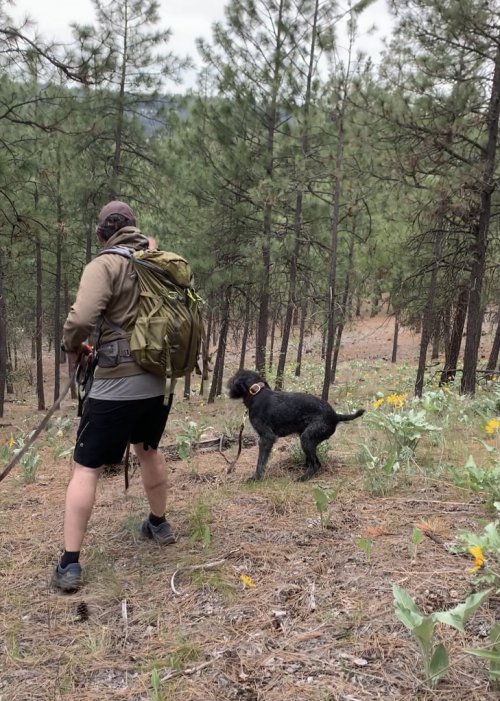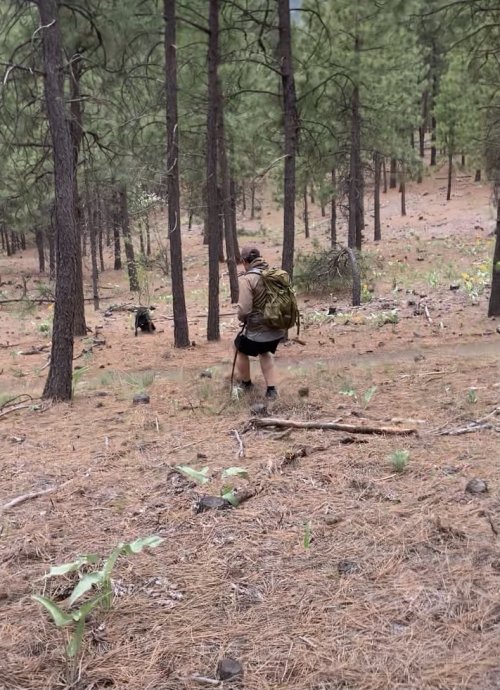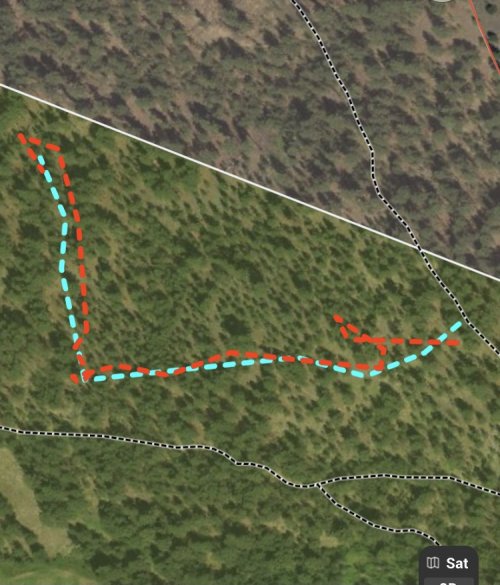I’m starting this thread earlier this year so as to include Finn’s training. I just mailed off his entry form for the final utility test in the VDD-GNA, the VGP test. This is a two day utility test that encompasses a variety of tasks, such as blood tracking, steadiness, retrieving, duck searches, and so on.
We have been training several days a week, and today was one of our longer sessions. Here are some photos and explanations of what we’re doing and why.
The first thing I do is lay the blood track so it can age. Then, we start the session with a hot dog track. Tracking is something a hunting dog should do on command, not when they feel like it.
The hot dog track is simple. I take two hot dogs and slice them into thin slices. I drop a slice every 3-4 feet or so.
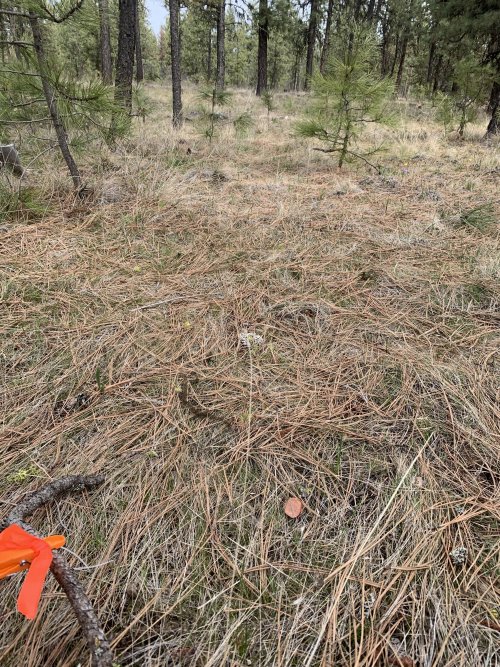
I really try hard to make tracking a methodical practice. I put Finn in a down stay at the start of the track. I situate the check cord with a half hitch around his flank. This helps control the dog, as you are controlling the pace of this.
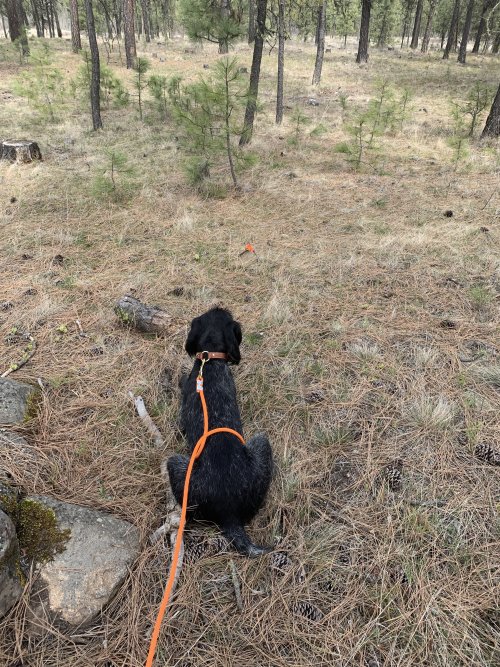
I give the “track” command and let him move forward. I force him to go slow and find every hot dog slice. If I see him start to over run one, I’ll just hold him at that point until he finds it. If he stops searching on the ground I point to it and give the track command. You can really see a dog turn a corner and develop a very thorough and methodical tracking pattern.
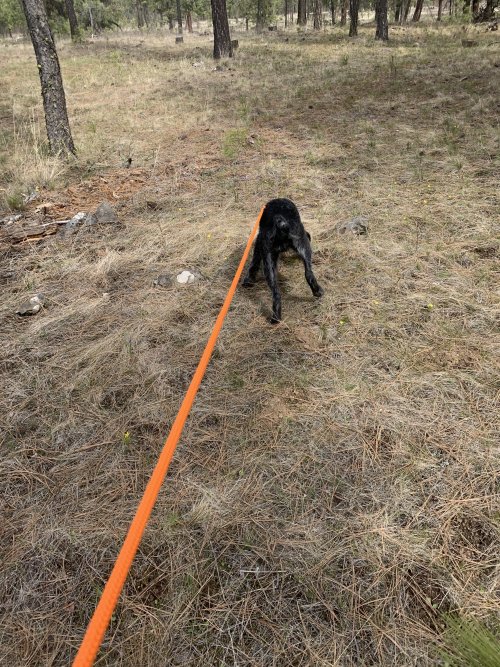
Next is the independent forest search. This is a task where you want to see the dog go search a piece of heavy cover on command, doing so in a methodical and thorough manner. I will find a section of heavy cover and distribute bumpers and/or pieces of game throughout. I mark these as I go in case we miss one.
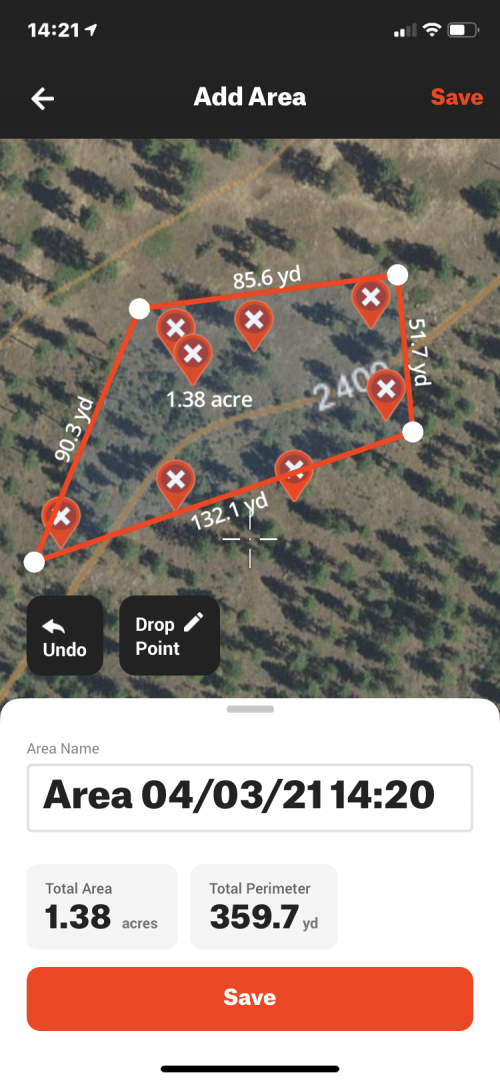
Then, you simply send the dog out on a “search” command. Every time they find something they should deliver it to hand, then you send them again.
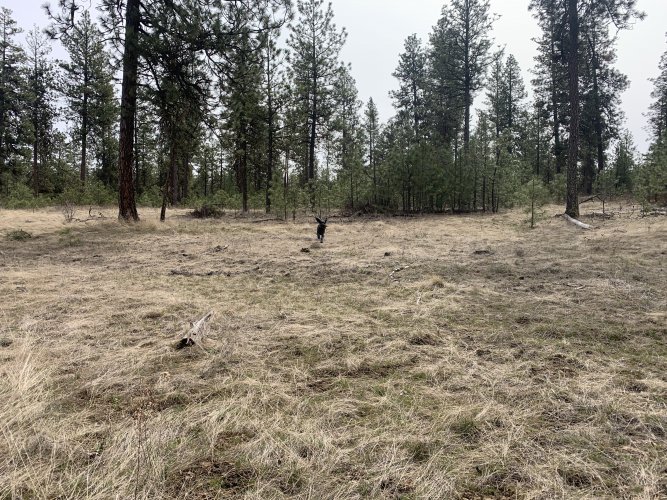
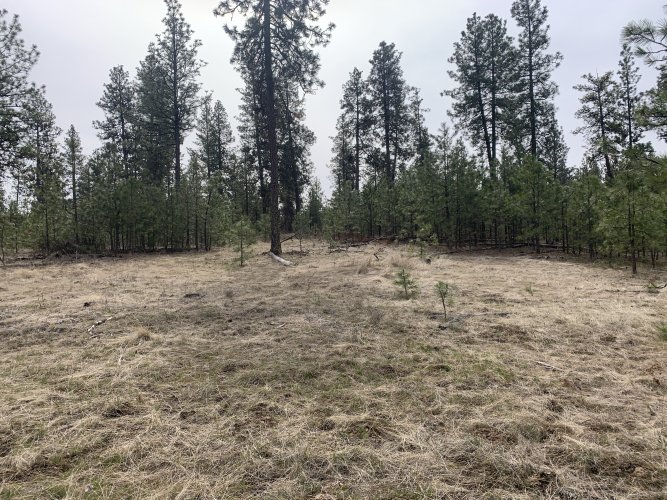
This is one of Finn’s shortcomings, so I make sure he covers all of the area, working the heavy cover. If he doesn’t push out far enough, I just walk out with him and let him expand his search. We have some progress to make in this, he likes to work the big open areas because that’s what he’s used to.
Next is a fur drag. This is partly about tracking and also very much about retrieving. I will walk him out on heel, then put him in a down stay. I drag a fox, rabbit, or raccoon. Test regulation is 400m, we did about 300m today. I set the check cord the same way as I did the hot dog track and then give him the “track” command. For this test they have to line the track out on their own. You can’t run with them for the first part of it.
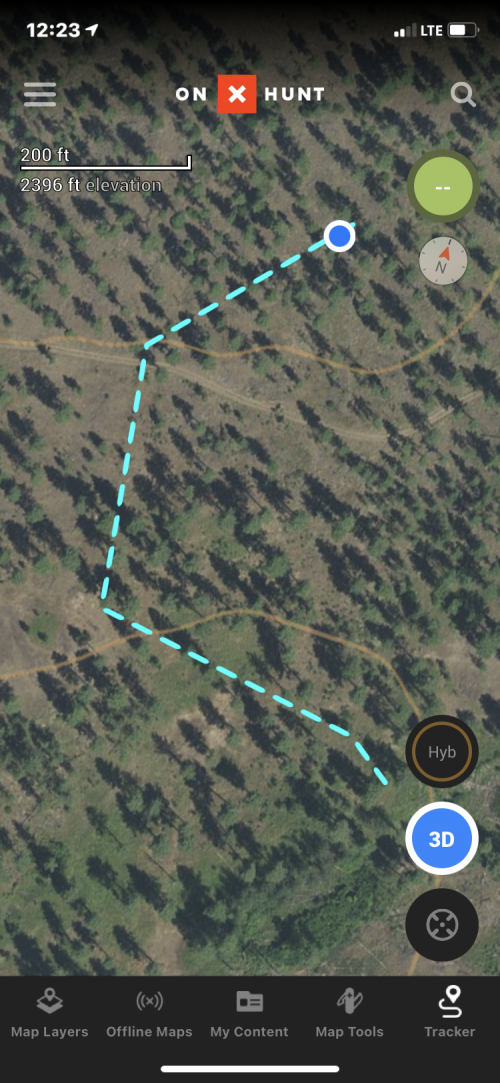
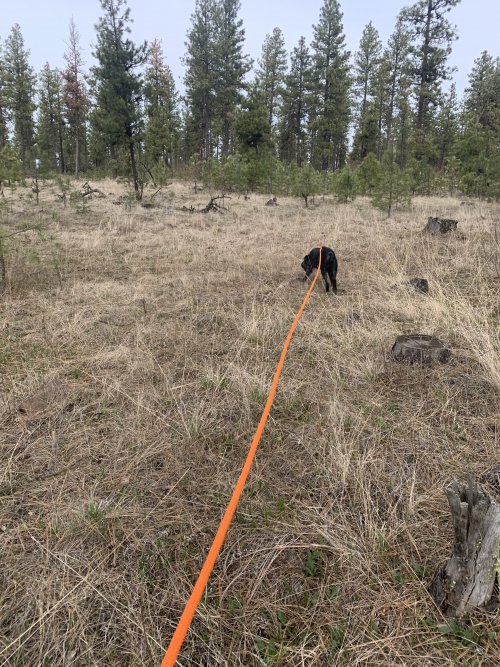
Once we get to the end I unclip the lead and he has to carry the fox back to the start. We retrace our route. The dog can set the animal down to readjust his grip, but can’t let go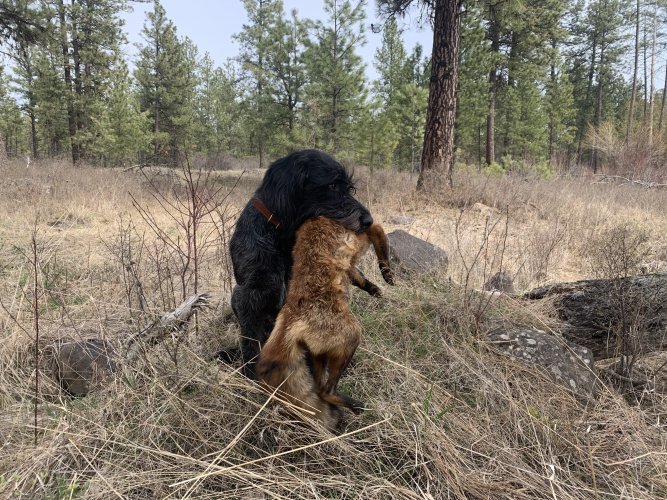
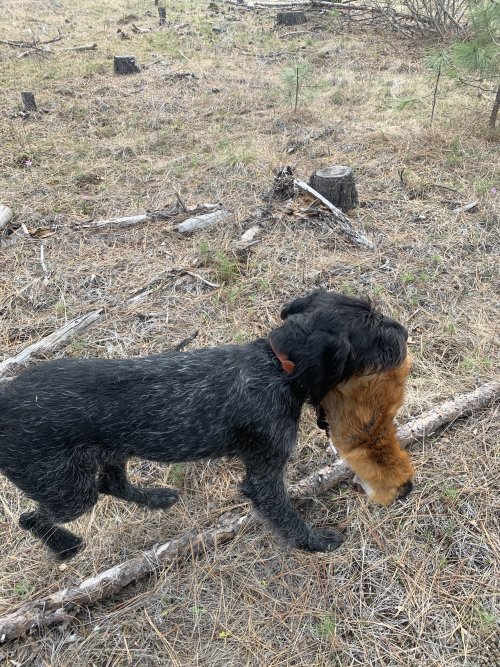
We finished the session with the blood track. This was 4 oz of blood mixed with 4 oz of water, and then dribbled over 0.27 miles. The track ages two hours while we did other stuff.
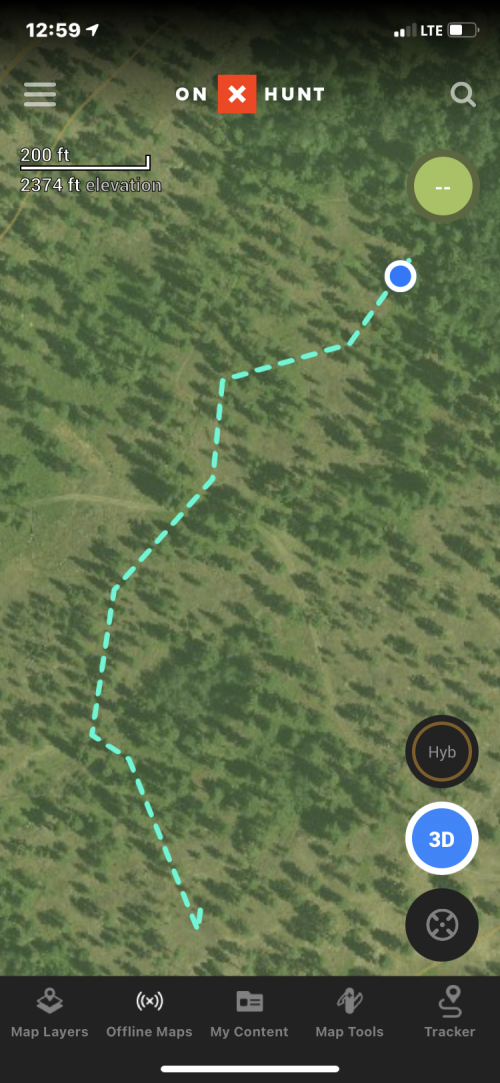
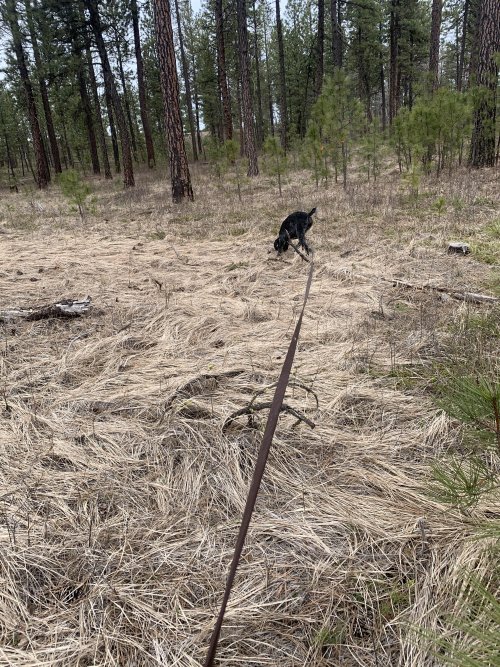

At the end of the track is a nice bowl of food and a deer tail to carry.
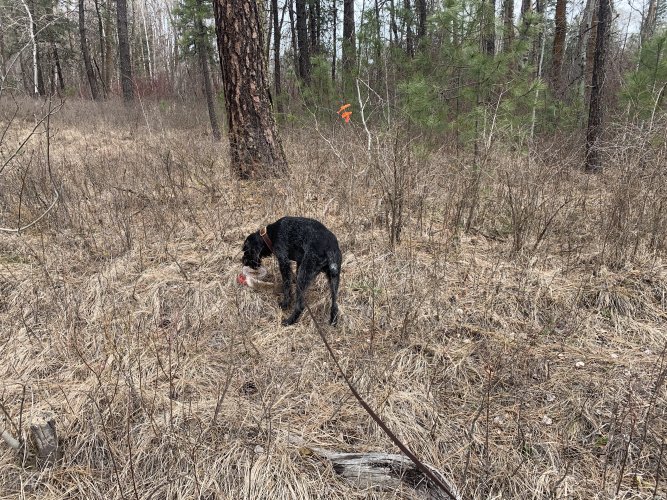
It’s amazing how hard it is to see that small amount of blood, even knowing where I put the track. Then, you watch a dog work that out in about 5-10 minutes and you realize what an incredibly valuable tool a blood tracking dog can be.
The last task of the day was to go home and retrieve over an obstacle. The test regulation is a 7 pound fox or raccoon, retrieved over a 27-30” barrier. This is a regulation fox at 25”.
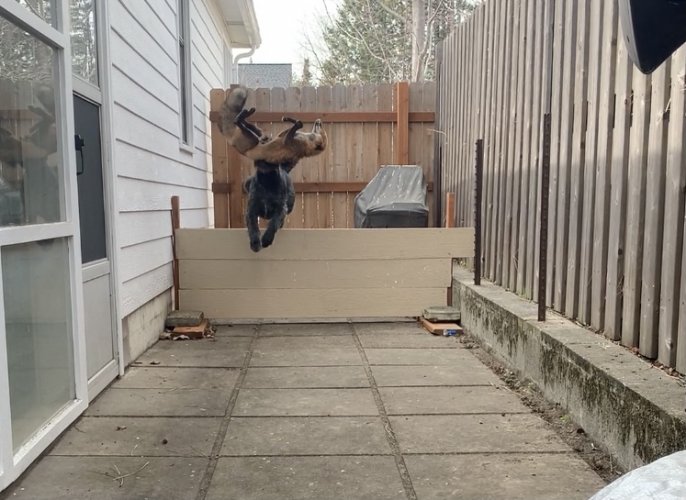
More to come
We have been training several days a week, and today was one of our longer sessions. Here are some photos and explanations of what we’re doing and why.
The first thing I do is lay the blood track so it can age. Then, we start the session with a hot dog track. Tracking is something a hunting dog should do on command, not when they feel like it.
The hot dog track is simple. I take two hot dogs and slice them into thin slices. I drop a slice every 3-4 feet or so.

I really try hard to make tracking a methodical practice. I put Finn in a down stay at the start of the track. I situate the check cord with a half hitch around his flank. This helps control the dog, as you are controlling the pace of this.

I give the “track” command and let him move forward. I force him to go slow and find every hot dog slice. If I see him start to over run one, I’ll just hold him at that point until he finds it. If he stops searching on the ground I point to it and give the track command. You can really see a dog turn a corner and develop a very thorough and methodical tracking pattern.

Next is the independent forest search. This is a task where you want to see the dog go search a piece of heavy cover on command, doing so in a methodical and thorough manner. I will find a section of heavy cover and distribute bumpers and/or pieces of game throughout. I mark these as I go in case we miss one.

Then, you simply send the dog out on a “search” command. Every time they find something they should deliver it to hand, then you send them again.


This is one of Finn’s shortcomings, so I make sure he covers all of the area, working the heavy cover. If he doesn’t push out far enough, I just walk out with him and let him expand his search. We have some progress to make in this, he likes to work the big open areas because that’s what he’s used to.
Next is a fur drag. This is partly about tracking and also very much about retrieving. I will walk him out on heel, then put him in a down stay. I drag a fox, rabbit, or raccoon. Test regulation is 400m, we did about 300m today. I set the check cord the same way as I did the hot dog track and then give him the “track” command. For this test they have to line the track out on their own. You can’t run with them for the first part of it.


Once we get to the end I unclip the lead and he has to carry the fox back to the start. We retrace our route. The dog can set the animal down to readjust his grip, but can’t let go


We finished the session with the blood track. This was 4 oz of blood mixed with 4 oz of water, and then dribbled over 0.27 miles. The track ages two hours while we did other stuff.



At the end of the track is a nice bowl of food and a deer tail to carry.

It’s amazing how hard it is to see that small amount of blood, even knowing where I put the track. Then, you watch a dog work that out in about 5-10 minutes and you realize what an incredibly valuable tool a blood tracking dog can be.
The last task of the day was to go home and retrieve over an obstacle. The test regulation is a 7 pound fox or raccoon, retrieved over a 27-30” barrier. This is a regulation fox at 25”.

More to come




